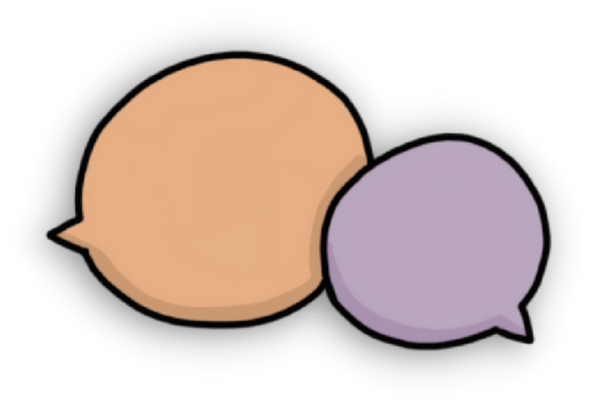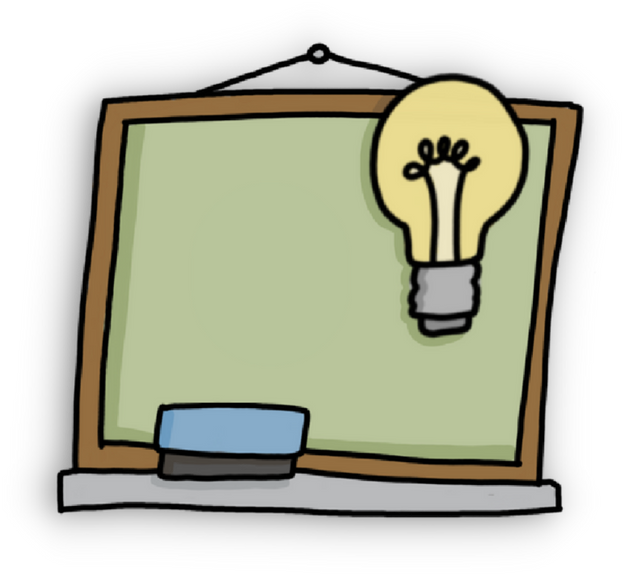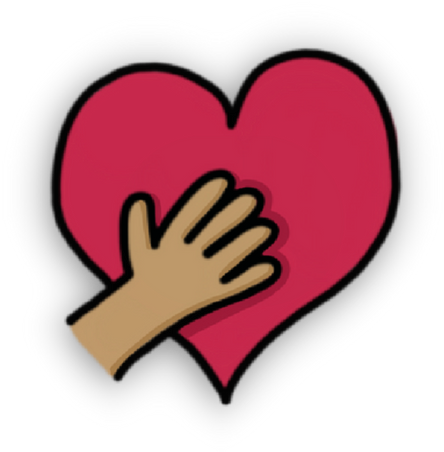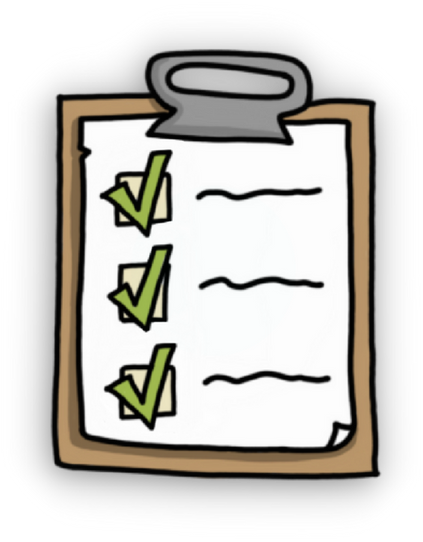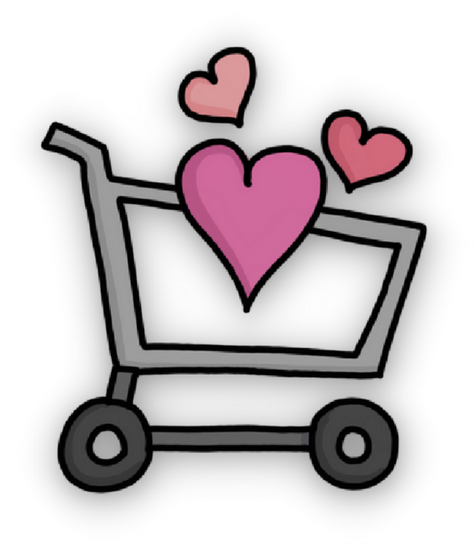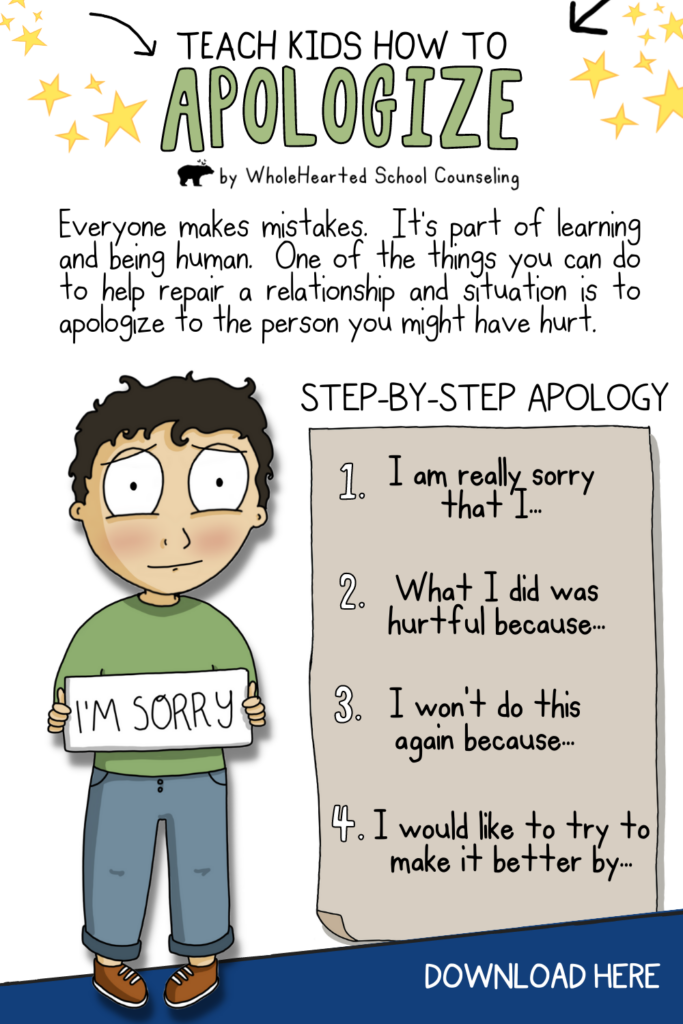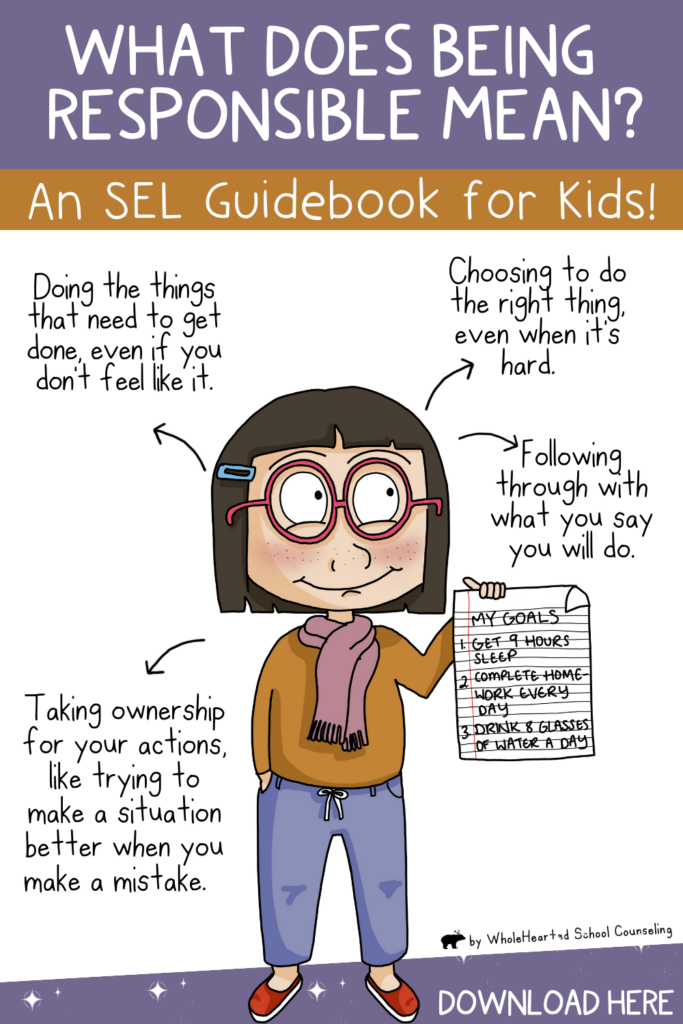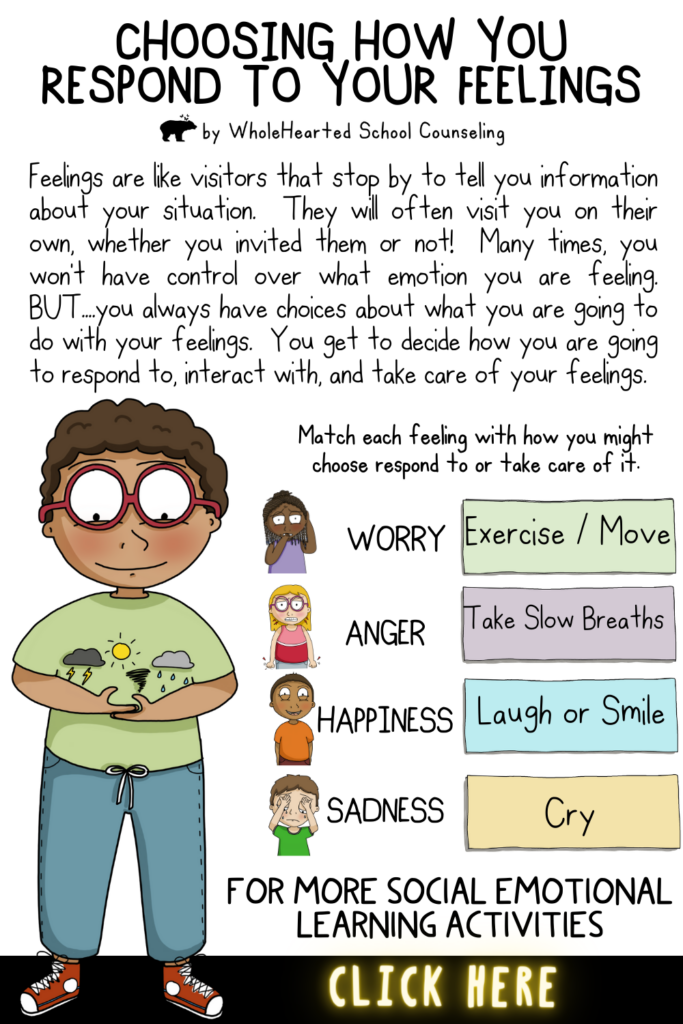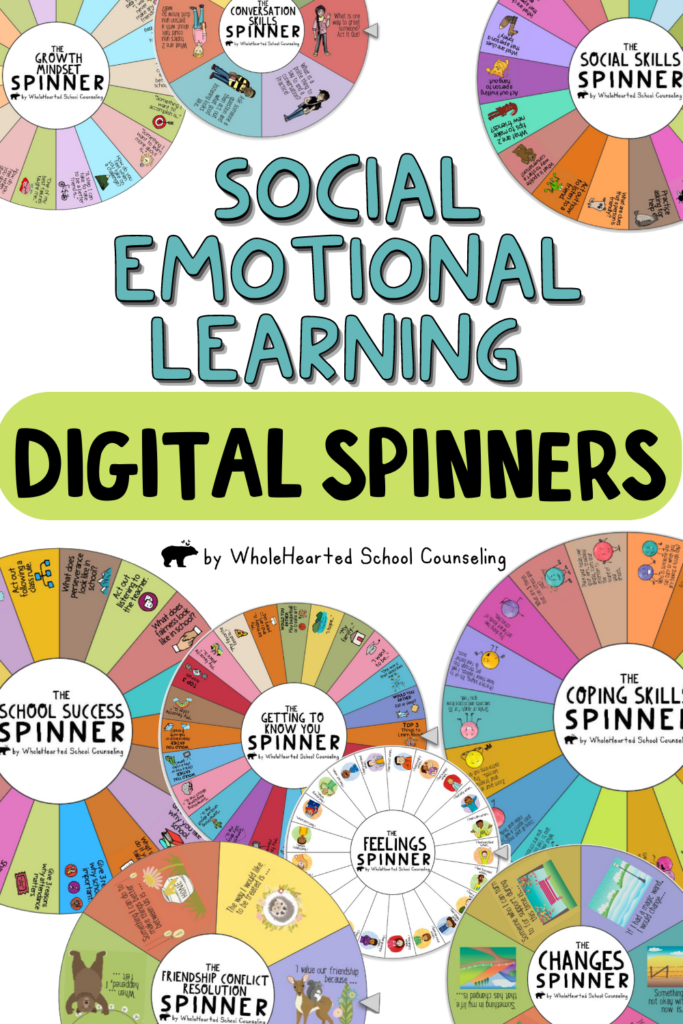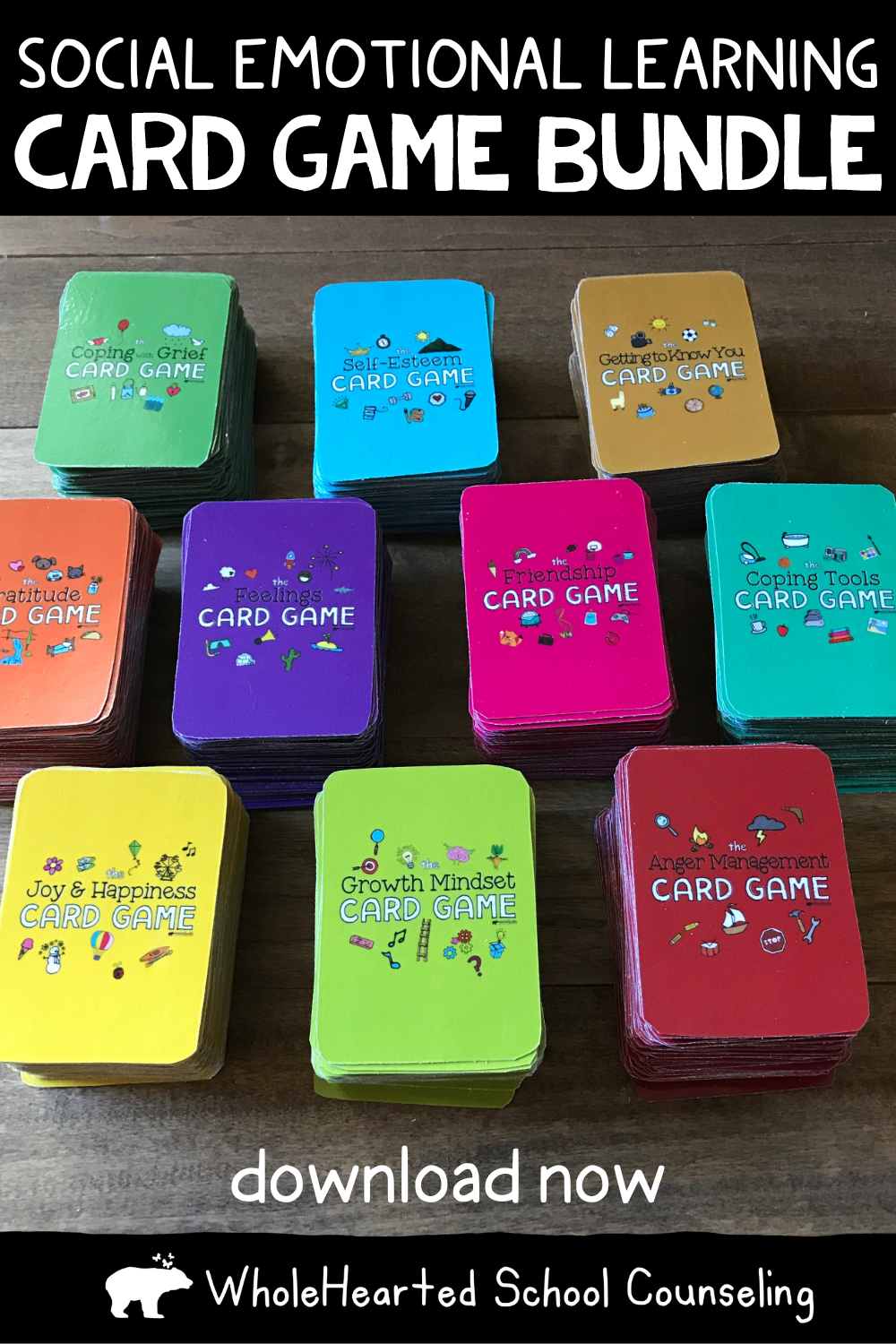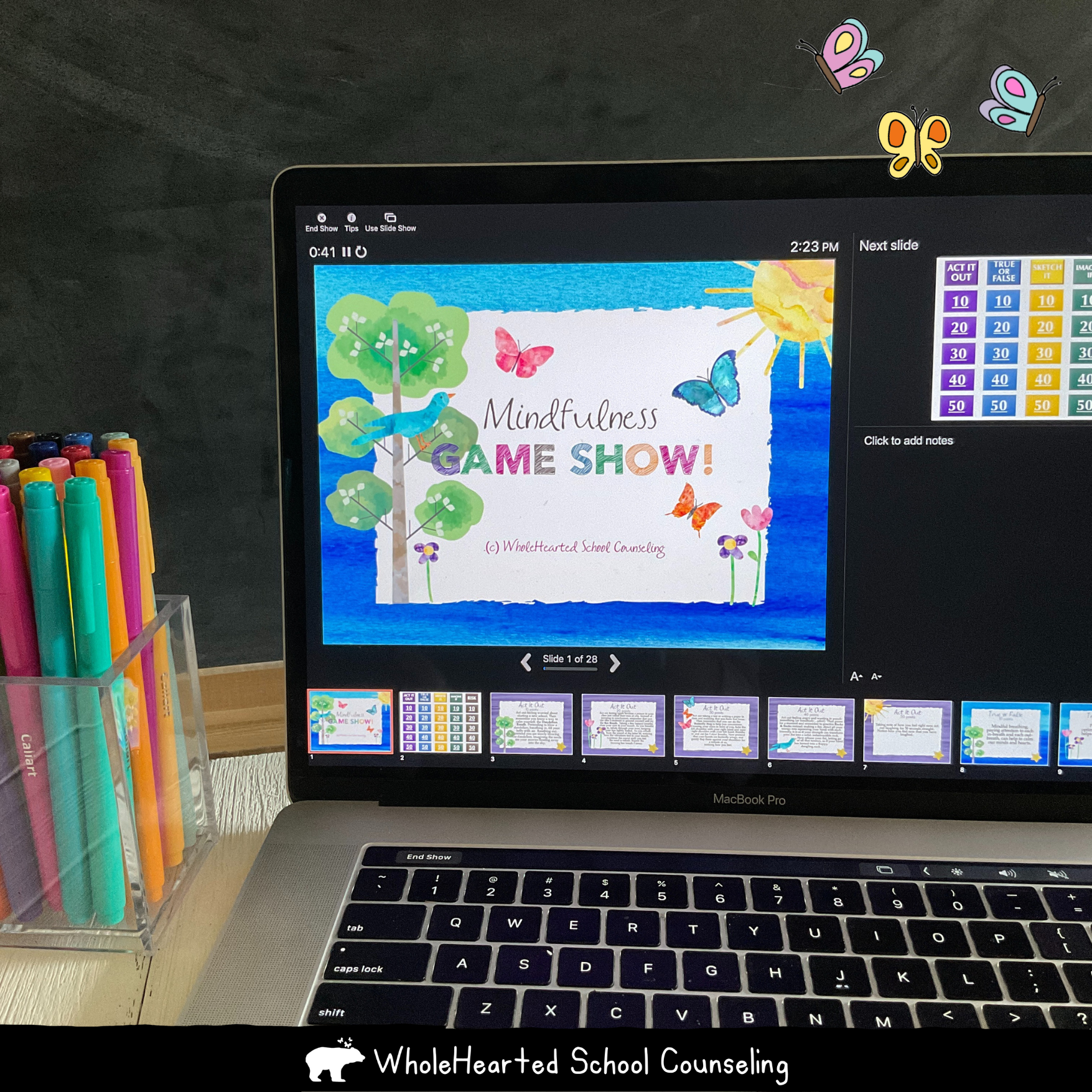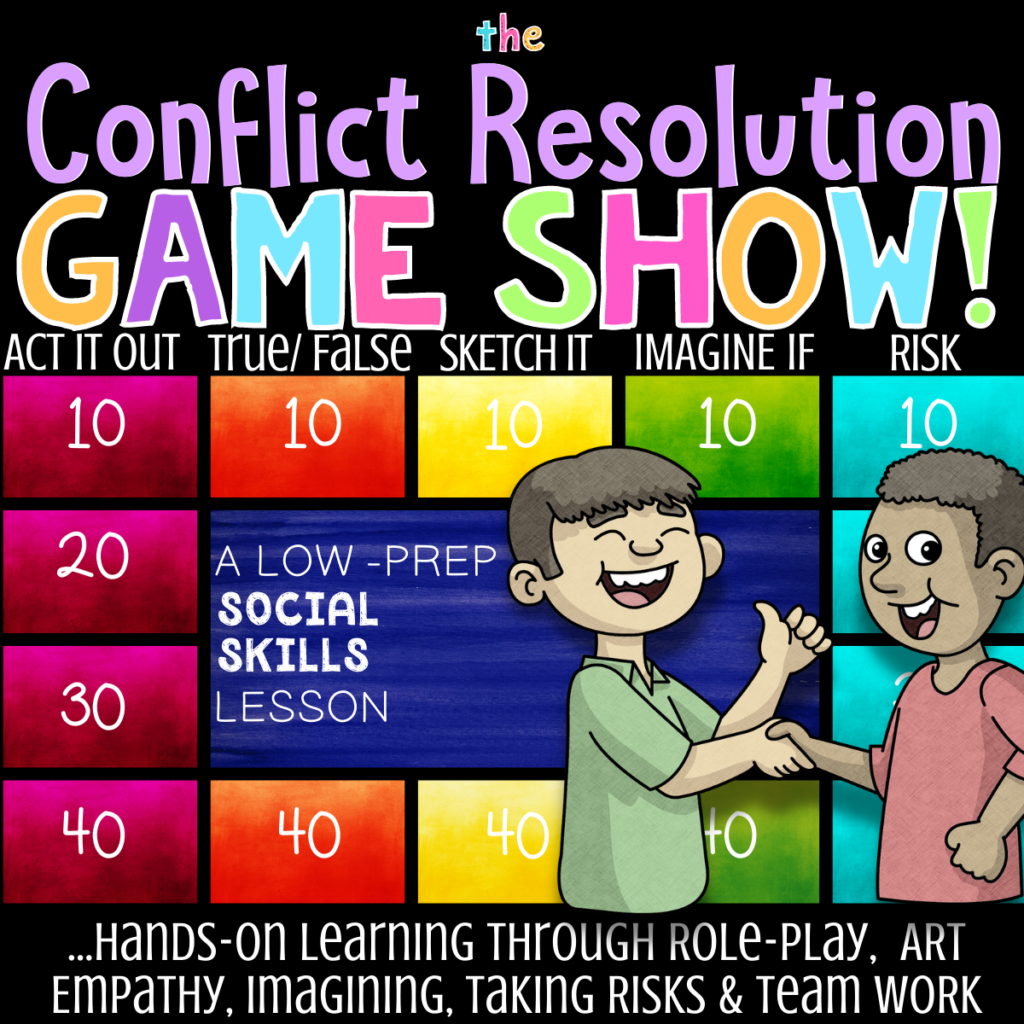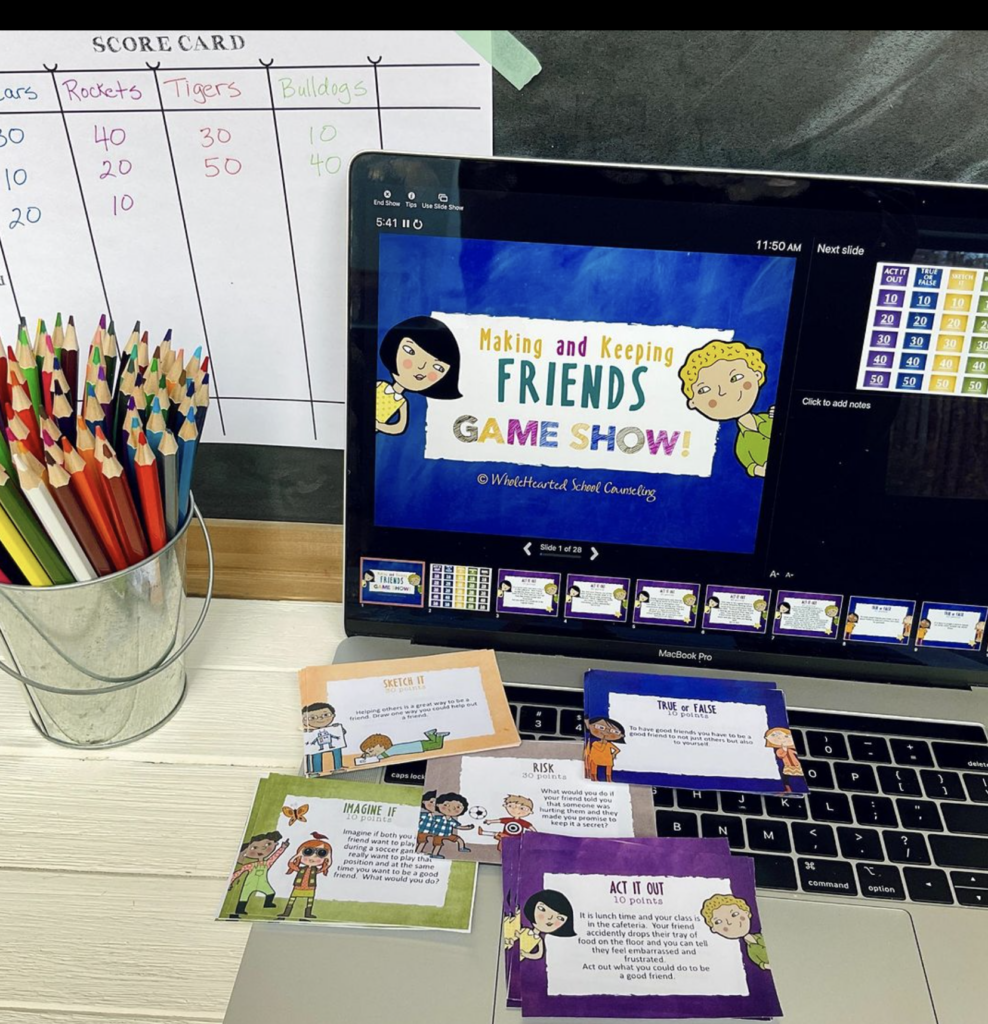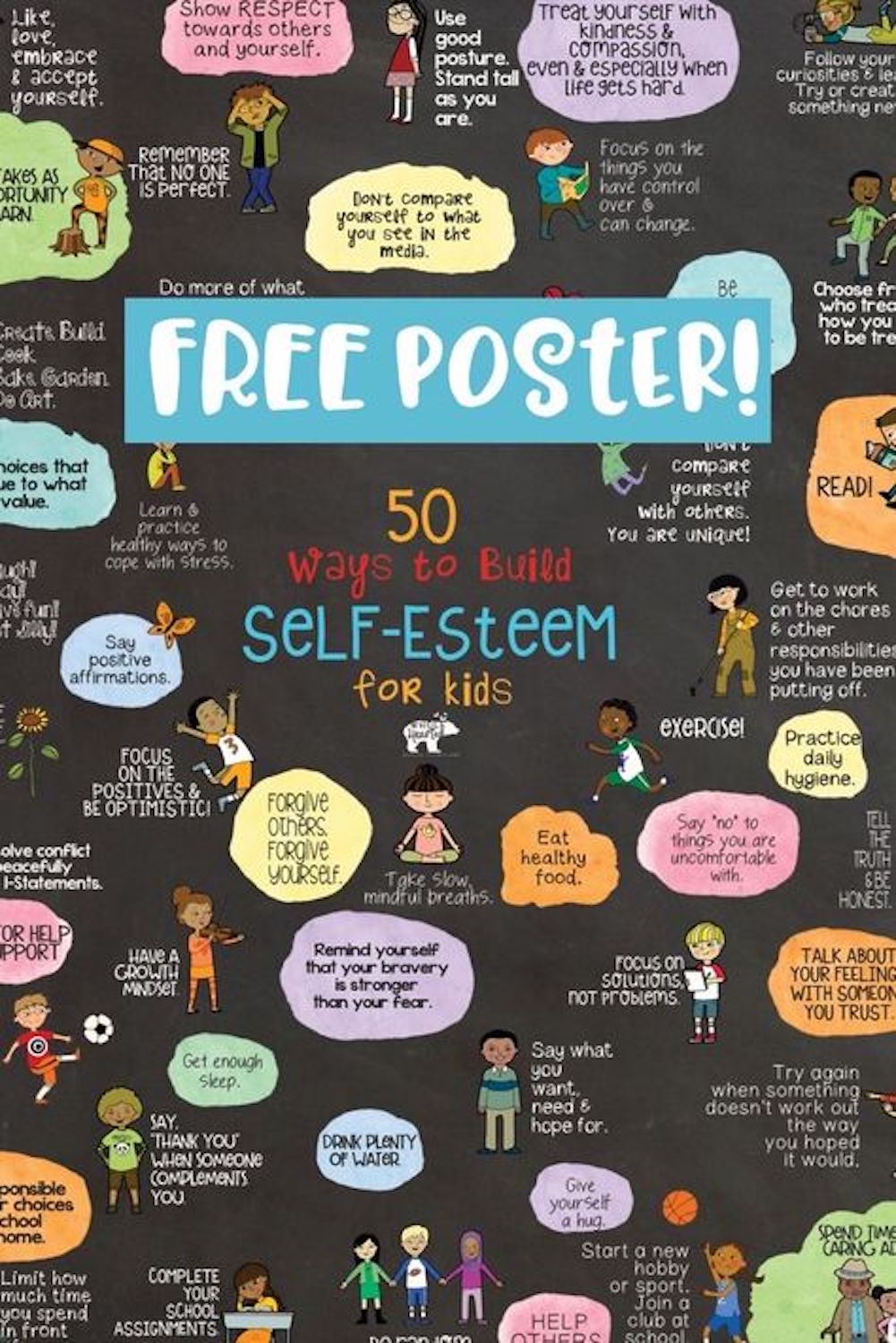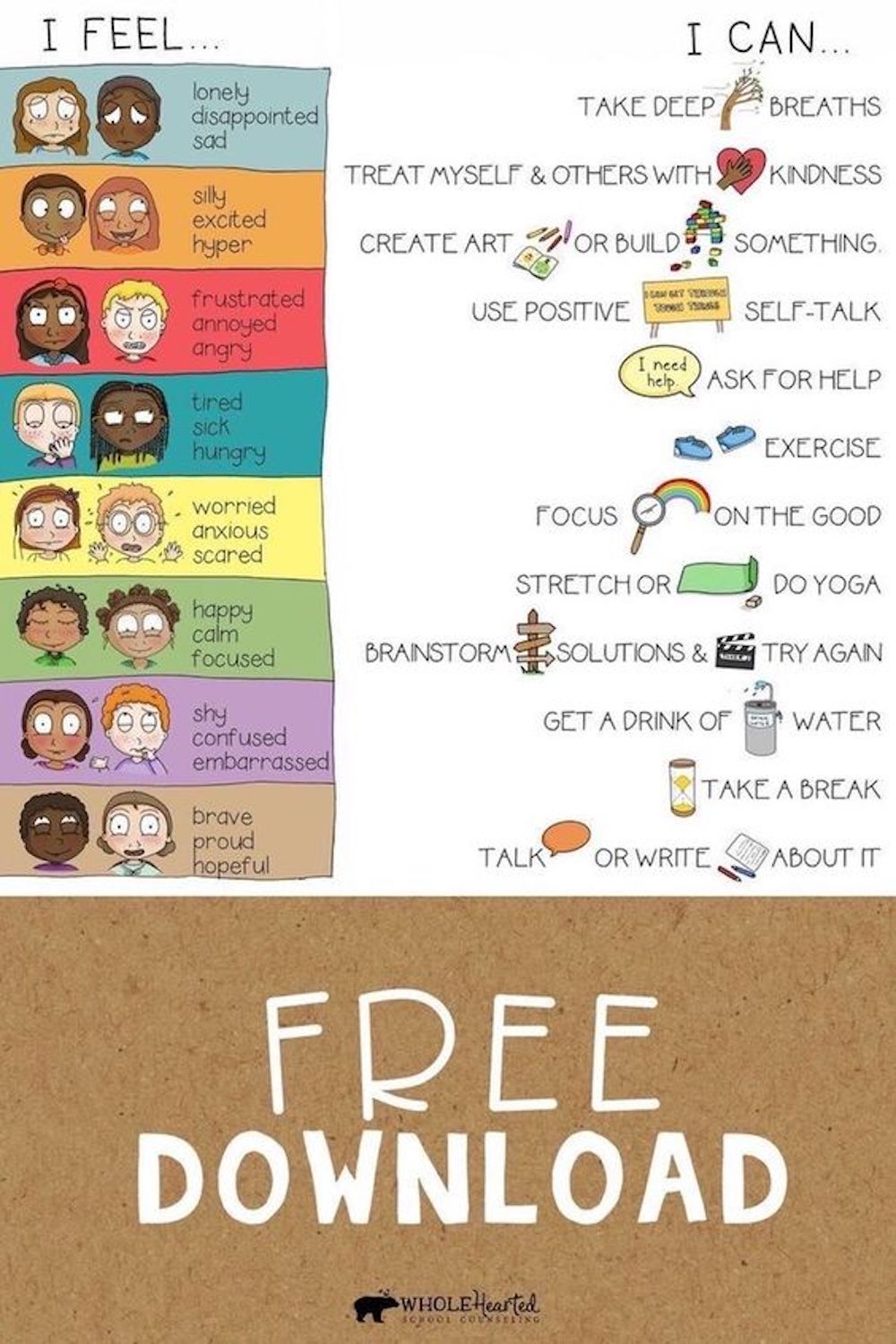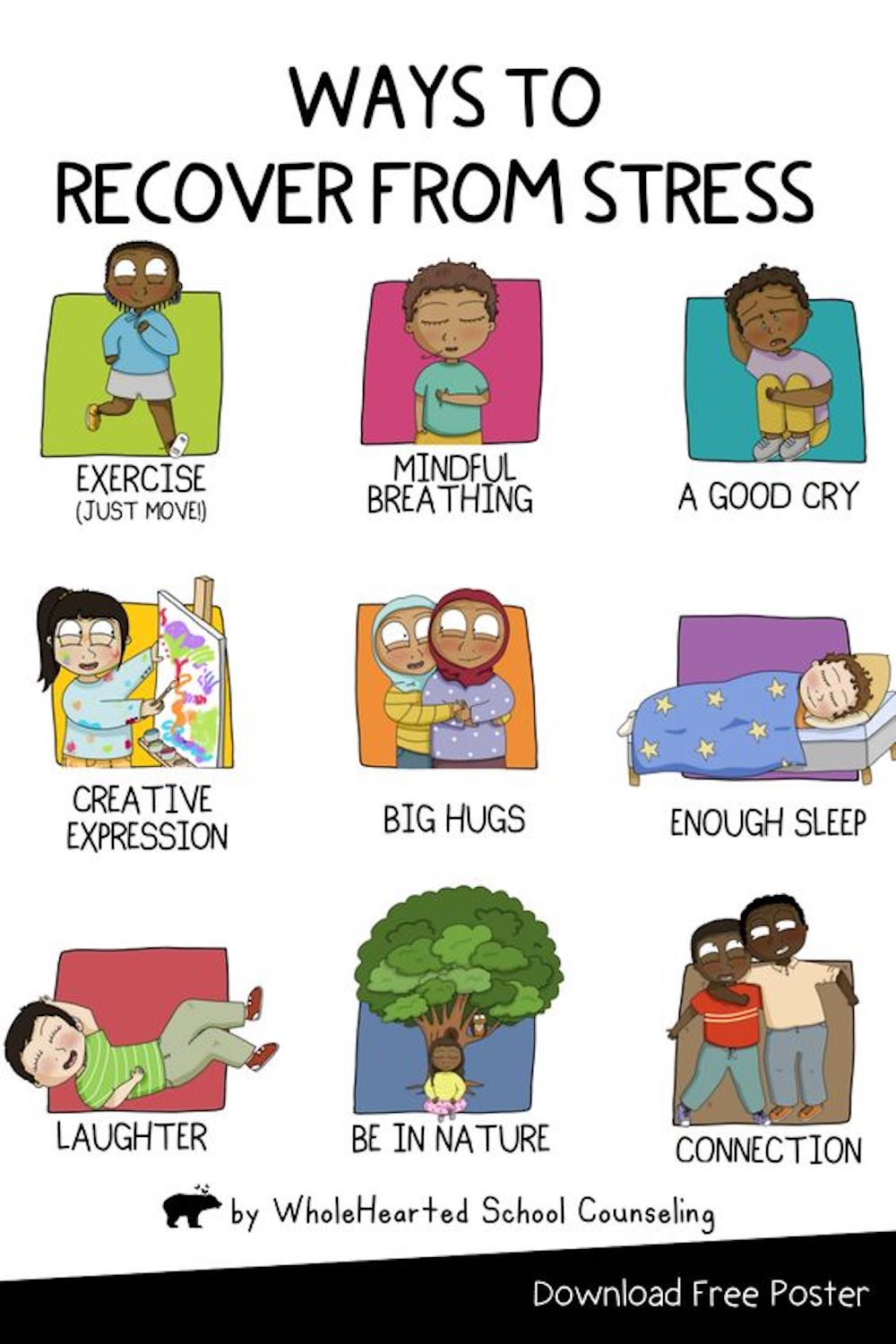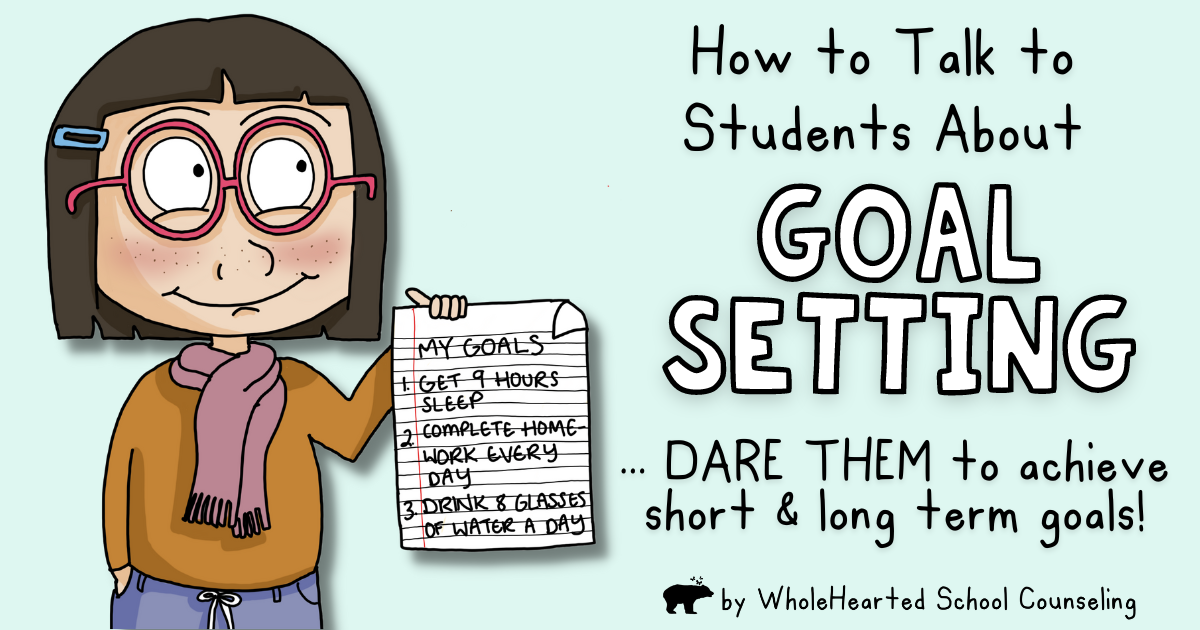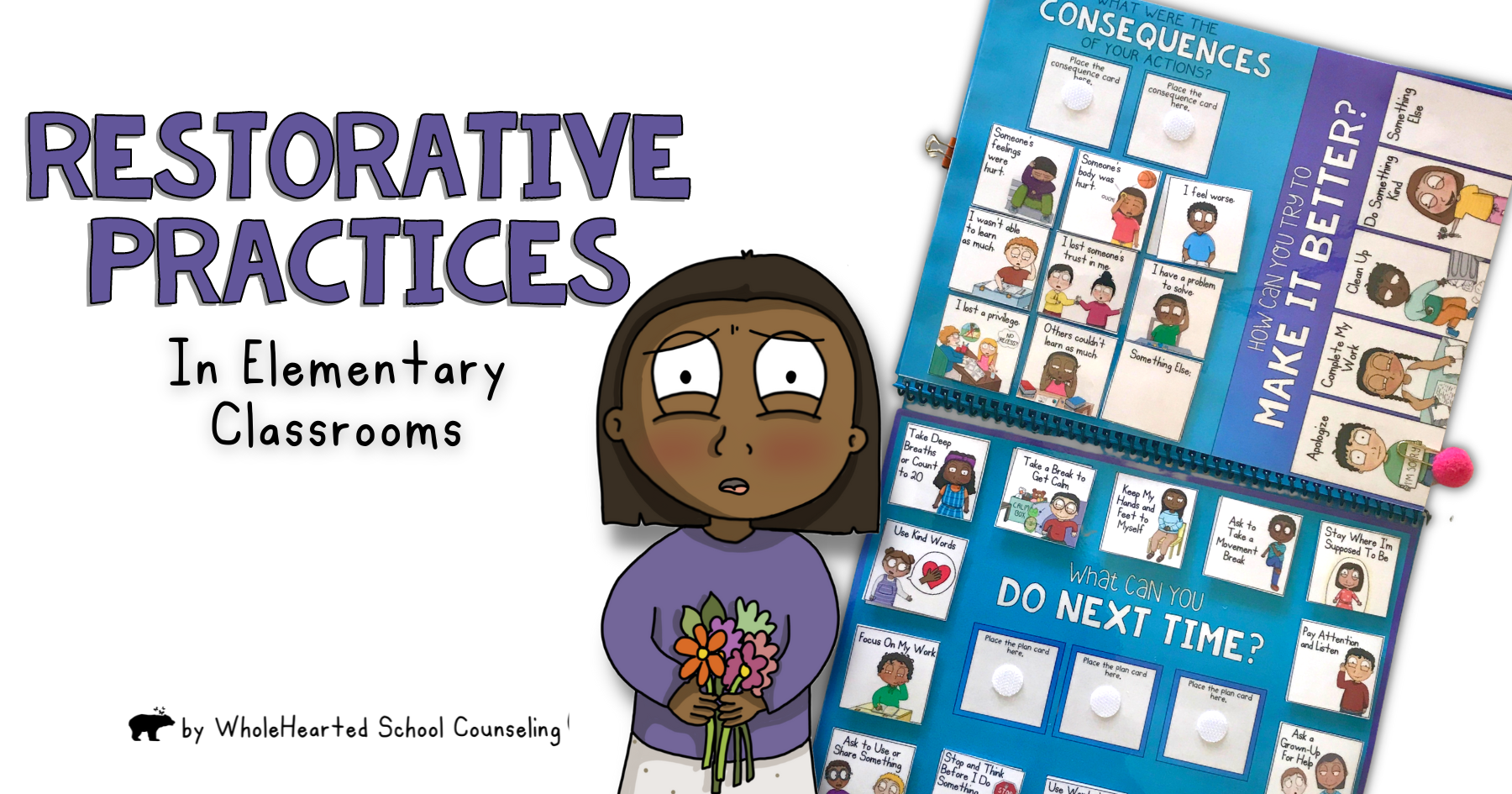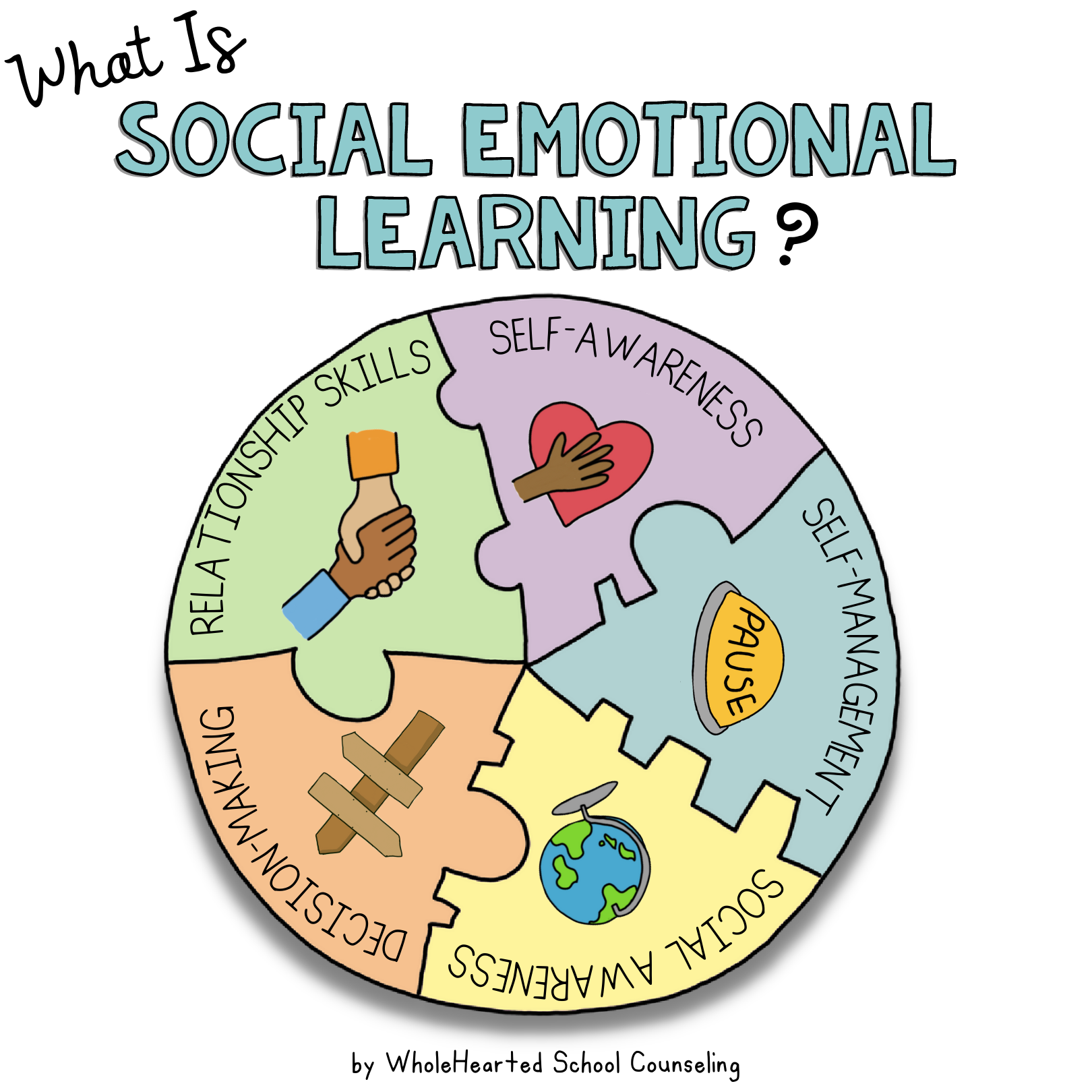
WHAT’S SEL ALL ABOUT?
Social Emotional Learning is not just another temporary buzzword. Nor is it just another professional development book to dust on the shelf. These days, SEL is becoming more and more important in classroom curriculum.
Working in education, you have lived through the ever evolving best practices and professional development for increased student success. And if you’re a school counselor you have watched ASCA mindsets and behaviors and professional standards and competencies advance and expand. Across the country, in addition to teaching the basics such like math, reading, writing, and science, schools are now moving full steam ahead in deliberately helping students further develop social and emotional skills.
How Social Emotional Learning Has Evolved in Schools
In a world with 24/7 access, instant gratification, and increased societal pressures, teaching SEL competencies has become some of the most important work of schools. Although not all concepts are new, most of this work has previously been done in isolation.
In the past, classroom teachers would work solo to create inclusive, supportive environments with school counselors teaching behavior, academic and career standards on a rotation. Tier one teams would meet to decide on school values and systems separate from administration discussing behavior data and expectations.
Now with the addition of a building wide focus on Social Emotional Learning, educators are being asked to make significant changes.
On the one hand, (unfortunately) this means more work for teachers. (As if teachers don’t already have 100,000 times more than enough to do, right?)
On the other hand, teachers get the bonus of professionals collaborating to share the load. This creates building consistency, learning from each other, and maintaining a supportive and hopefully more fun environment to work in. And although integrating SEL into your daily curriculum requires more upfront work, one of (fingers crossed) benefits is that ultimately problem behaviors are reduced. This means easier classroom management for you!
What Skills Does SEL Include?
At the most basic, foundational level, social emotional learning skills are life skills. SEL skills are transferrable to other subjects and activities inside and outside of the classroom. They help students to be more successful with group work, teamwork, social connections, and tasks that require executive functioning. They not only help students develop resilience and positive social relationships, they also improve academic and future career performance.
There are 5 primary areas that social emotional learning focuses on. These domains include self-awareness, self-management, social awareness, relationship skills, and responsible decision-making. More specifically, these skills translate into:
Self-Awareness
- understanding yourself better, including identifying your feelings
- recognizing your strengths and what you can improve on
- building resilience and grit as you work through challenges
- imagining your best possible future self, goals, and dreams
- successfully achieving goals

Self-Management
- managing emotions and relating to feelings and thoughts in more healthy and helpful ways (as compared to just reacting)
- using self-control
- practicing executive functioning skills, such as organization, planning, and study skills

Social Awareness
- acquiring and advancing knowledge, skills, and attitudes to connect with each other
- reading body language and social cues
- perspective taking and empathy
- respect

Relationship Skills
- developing effective communication skills
- using healthy conflict resolution strategies to deal with problems and finding solutions
- making and keeping friends
- showing kindness

Decision Making Skills
- making responsible and respectful decisions
- making positive and helpful choices
- dealing with peer pressure
- cultivating healthy habits and self care

How Can You Start Implementing SEL into Your Classroom?
There are tons of different, creative, and easy ways you can integrate social emotional learning into your classroom. Here are some ideas, many of which you are probably already using:
Picture Books, Short Stories and Novels:
You are already using literature in your classroom. So why not underscore examples of empathy, admirable strengths, growth mindset, friendship, and problem solving in your classroom discussions and writing assignments? (I bet you were doing this before SEL ever became a thing anyway, right?) Either choose a text that specifically talks about your targeted SEL topic, or just highlight social emotional themes that are woven in what your class is already reading. (Some favorite picture books of mine are those written by Julia Cook, Trudy Ludwig, and Jory John.)
Daily Journaling
If you are an elementary school teacher, you probably already have your students reflect and write every single day. Consider inviting students to focus in on SEL topics. Ask them to write about their feelings, hopes, dreams, and goals. Or give them prompts that focus on times they have shown responsibility, been respectful, or showed kindness towards others.
Like the development of most skills, consistency and every day practice is key. Which is why I designed the SEL Journal and Daily Check-In for elementary kids. This resource was created for you, the classroom teacher, school counselor, or other school staff, to hit the ground running with SEL in your classroom, in small groups, or individually.
With over 220 concise SEL activities that cover the most important topics, easily integrate SEL into your daily curriculum in 15 minutes or less. Perfect for for morning meetings and bell ringer activities. And since each entry contains a feelings check-in, you get to gauge how your students are feeling. Each mini-lesson includes a feelings thermometer and SEL self-reflection writing prompt. Moreover, it’s as low-prep as it gets: just print and go and/or share the digital slides. Plus, your students will love the detailed visual supports, too!
Each of the 5 SEL foundational competencies are broken down into its own journaling notebook (or combine them all into one great workbook!).
By utilizing a tool like journaling, you can differentiate the learning by working individually with some students and allowing others to work ahead on their own. In addition, you are also equipping them with a coping strategy (self-reflection via writing) that can be easily transferred to other situations and environments.
(Check out a few of the SEL bite-sized-mini-lessons which are included the SEL Check In Journal below).
Morning Meetings
Starting the day or class period with a morning meeting (or daily wrap up at the end of the day) helps to build routine, classroom community, and relationships. Morning meetings or bell ringers can provide the perfect structure for students to share personal reflections, discuss problems and solutions, and address different challenges they might be facing. For example, consider integrating fun greetings, doing a feelings check-in, practice a mindfulness exercise, give each other compliments, discuss a quote of the day, and/or practice different coping strategies that can be used at school .
Play Games!
Playing games are surefire ways to integrate SEL into your students’ learning (without them even knowing it). The act of playing games is sort of like SEL in the making. While playing and taking turns, participants are building social skills, practicing making decisions, building frustration tolerance, learning the art of compromise and sportsmanship, and following rules and expectations.
For instance, simple store bought games like Jenga™ , Don’t Break the Ice, and Concentration encourage students to practice executive functioning skills like self-control working memory. Or each time a player takes a turn (for really any game), have them answer a conversation starter that’s related to a specific social emotional learning topic. You can make up your own questions and cards, or snag pre made task cards or lists of questions like in the Make Your Own Social Emotional Learning Game resource I created a few years back.
Some other game-like options include:
Digital Spinners
Kids love the randomness and anticipation of digital spinners!. If you’re looking for something no-prep, fun, engaging and easy to add to your SEL curriculum or small groups, you and your students will love these SEL digital spinners! They also work wonders as quick and easy conversation starters, ice breakers, morning meeting activities, and closing circle questions.
Topics include: anger, attendance, CBT: challenging your thoughts, changes conflict resolution, conversation skills. coping skills, divorce, empathy / feelings, expected behaviors at school, feelings. growth mindset. gratitude, school success, self-esteem. strengths and support systems, social skills, and goal setting.
SEL CARD GAMES
Or you may also love these super fun SEL Card Games. Not only are they great for individual and small group counseling, they also work awesome in centers, too! Rules are easy to learn, too. As these card games are similar to UNO™. (And who doesn’t know how to play that?)
Jeopardy™-Style Whole Classroom Games and Lessons
Another awesome way to integrate playing games into your classroom is using a Jeopardy™ style game that has a social emotional topic attached to it. If you are looking for fun, low-prep and interactive SEL lessons, check out some of the Game Shows I’ve created. From character education, social skills, career exploration, growth mindset, mindfulness, coping skills, and book companion lessons, you’ll be ready to integrate social emotional learning into your classes all year long. For example, need to review classroom rules? Check out the Classroom Rules and/or Expected and Unexpected Behavior Game Show. Or perhaps you want to teach your students skills to build healthy friendships? If so, try the Friendship Game Show. Other topics include Conflict Resolution, Coping Skills, Growth Mindset, and ways to show Responsibility.
Decorate With Social Emotional Learning Visual Supports
Pretty up your classroom with SEL visual supports. So even when your class is not actively engaged in a social emotional learning activity, students can see visual reminders of some of the most important ideas you’d like for them to remember. And no need to spend tons of money on this either! Just pop into my store at TPT to download some of my many FREE posters (and SEL activities, too). Download and print my 50 Ways to Build Self-Esteem poster. Or hang up the ways to deal with stress one. In addition to the Feelings Check-In and Coping Skills reference poster. With over 75 free social emotional resources, you’ll likely be able to find a thing or two or three.


